
The Business of Fashion
Agenda-setting intelligence, analysis and advice for the global fashion community.

Agenda-setting intelligence, analysis and advice for the global fashion community.
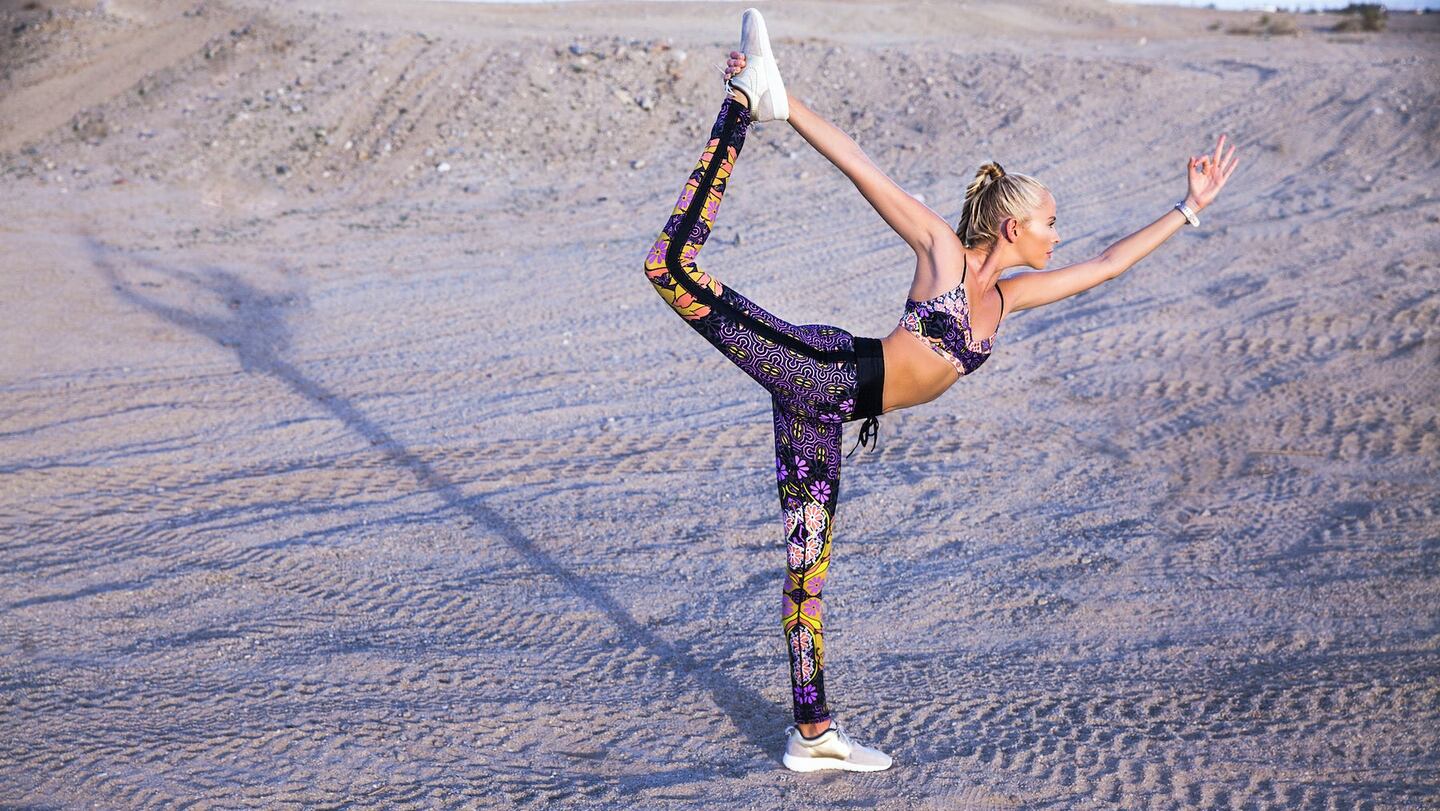
NEW YORK, United States — Fifth Avenue just below 23rd Street has long been a "mini-mall" of sorts: 10 sparkly clean blocks of retail, ranging from Kate Spade, Club Monaco and Sephora to Zara, J.Crew and American Apparel. There are home goods stores, an Eileen Fisher, an Intermix, even an Eddie Bauer. But, these days, this retail promenade, smack in the middle of the city's Flatiron District — a hub for tech start-ups and indie companies — is home to a number of newcomers, including at least seven retailers dedicated to activewear, some occupying spaces right next to each other.
Alongside well-known names like Lululemon, New Balance, Gap Inc's Athleta and Nike are newer arrivals like British brand Sweaty Betty, multi-brand boutique Bandier and Tory Sport, Tory Burch's activewear line, which threw a grand opening party on Wednesday, April 6, attended by the likes of Anna Wintour, Narciso Rodriguez, Wendi Murdoch and Amanda Brooks. The buzz had plenty to do with Burch's standing in the industry, but it's also reflective of the growing importance of the global activewear market, set to reach $83 billion in sales by 2020, according to a report released by Morgan Stanley last year.
And yet, while lower Fifth Avenue’s changing retail landscape suggests there is no dearth of players vying for market share, only some have the potential to achieve significant scale and compete with industry giants like Lululemon, which generated $2.1 billion in the 2015 fiscal year, and the Nike brand, which generated $8.6 billion in apparel revenue in the 2015 fiscal year.
OUTDOOR VOICES
ADVERTISEMENT
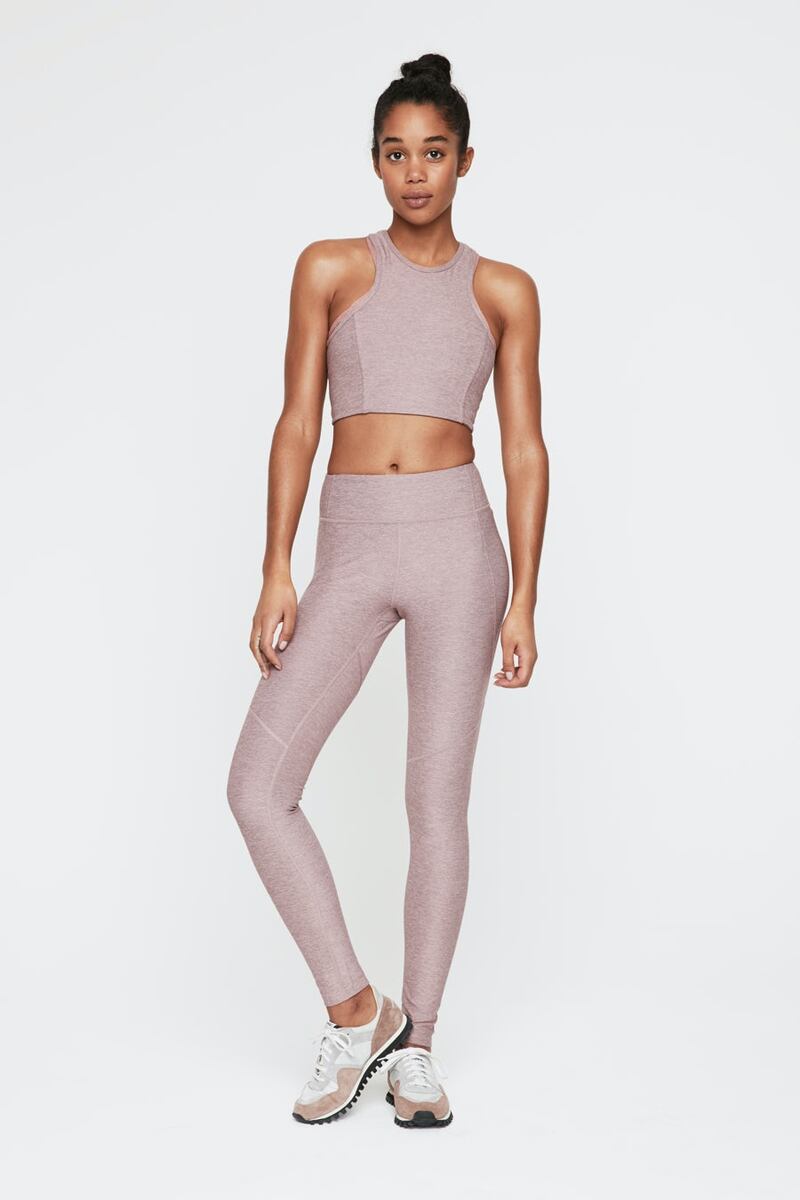
Outdoor Voice's leggings and bra set | Source: Courtesy
The Story: Founded in 2013 by Parsons School of Design graduate Tyler Haney, Outdoor Voices has fashion industry support — A.P.C.'s Jean Touitou is one of the brand's strategic investors — as well as venture funding, thanks to its direct-to-consumer strategy. Haney says the company's focus is on recreational sport, not competition. (Brand signatures include colour-blocking and heathered fabric in minimalist shapes and fashion shades.) "I very much felt there was an opportunity to free fitness from performance, taking every day activity and finding the beauty in it," Haney told BoF. "We wanted to create product that functions in the same way as that of Nike and Lululemon, but more aesthetically aligned with what I wear day to day, like Acne and A.P.C." This helps to explain why Haney felt someone like Touitou was important to bring on not only as an investor, but as an advisor. "I wanted to have partners in the mix who have operated businesses in the fashion world."
The Plan: With $9.5 million in funding from partners including General Catalyst and Forerunner Ventures, the company says that sales have grown 800 percent over the past year. While e-commerce currently makes up 80 percent of Outdoor Voices' business, Haney plans on expanding its physical retail footprint over the next year. Joining a store in Austin, Texas, will be a permanent store in New York City, among others. This summer, the company will also launch its first collaboration with A.P.C. and introduce a new fabric that has been in development for a year and a half. "For us, the focus is on material," Haney said. "The point of raising these large [funding] rounds is so that we can defensively put more money into product development and research."
YOGASMOGA
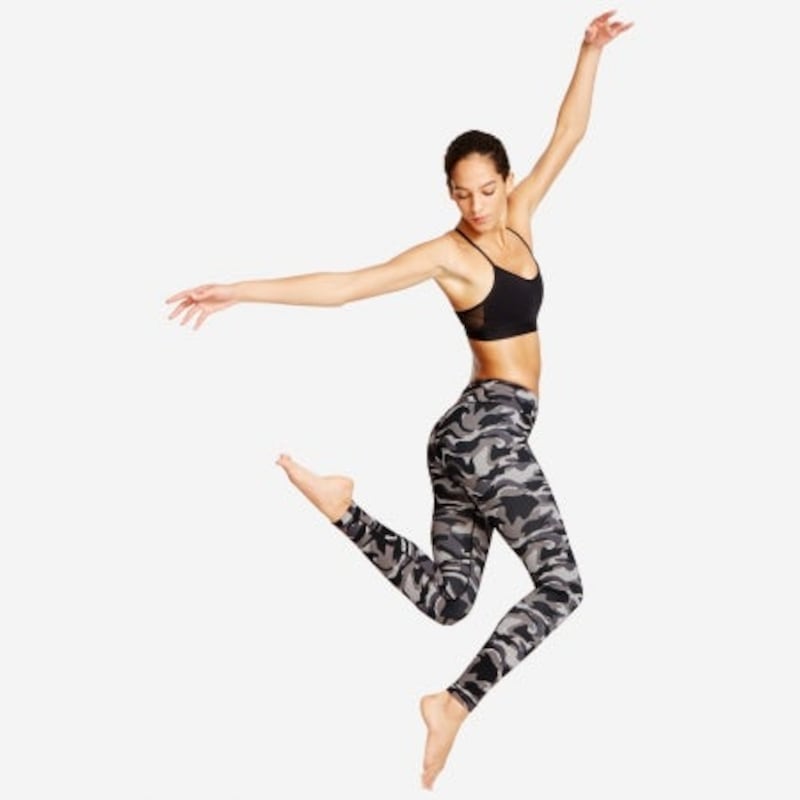
Leggings from Yogasmoga | Source: Yogasmoga
The Story: Founded in 2013 by brother and sister (and Wall Street veterans) Rishi and Tapasya Bali, Yogasmoga's first collection of US-manufactured athleticwear — even the yarn is bought in the US and fabric developed in California labs — sold out in three weeks. Today, the apparel company has 12 stores in the United States with plans to open 25 more by the end of 2016. In 2015, Yogasmoga — which started with its namesake but now sells clothes for running, spinning and daywear — raised $6.5 million in a Series B finance round at a $74 million valuation. (It is now in the midst of raising its Series C round of funding.) Along with domestic production, another point of differentiation for Yogasmoga is its technical fabric, which the company says is resistant to pilling and offers superior moisture wicking. Dedication to yoga as a lifestyle is a big part of its branding. "It speaks to the consumer who is looking for an American brand that is purpose-oriented," said chief executive Rishi Bali. "Today, we feel like people are looking for a purpose, not just product."
The Plan: More retail expansion is on the way. "Going into 2018, we expect to have 125 stores and a corresponding valuation of $1 billion," Bali said. "To be able to scale, we have solved for a very strong brand, a supply chain and product mix that can feed the engine, and a direct-to-consumer model." The goal is to enter into more markets in the US, but also perhaps Canada, and to nurture the rest of the growing international customer base online. Men, too, are a big part of the Yogasmoga brand. Some individual stores see a 60-40 female-to-male split among its customers. What's more, because the goods are manufactured domestically, "We have a supply chain that is very agile and will allow us to scale," he continued.
CARBON 38
ADVERTISEMENT
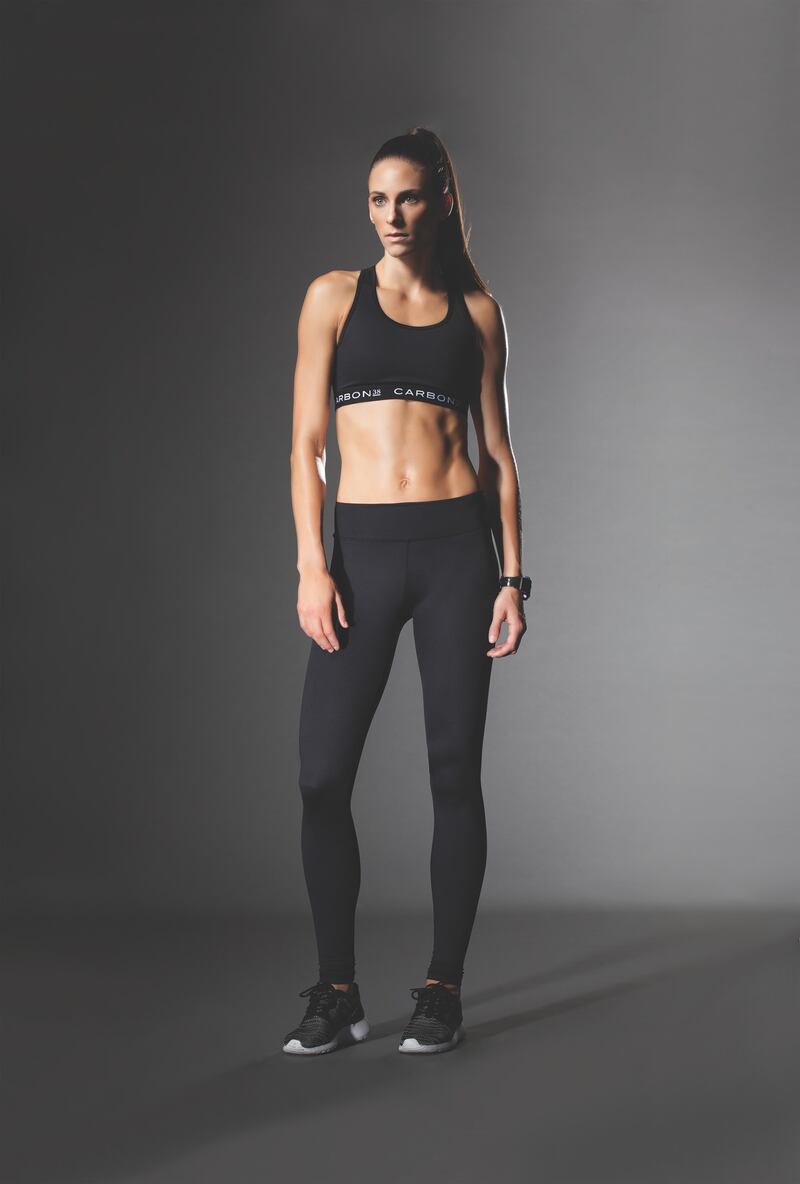
Carbon 38's sports bra and leggings | Source: Carbon 38
The Story: Founded in 2013 by ex-ballet dancers and Harvard classmates Katie Warner Johnson and Caroline Gogolak, e-commerce site Carbon 38 features high-fashion, high-end activewear modelled on fitness instructors. (Warner Johnson was one of the first instructors at the popular barre studio Physique 57.) "We realised that there was all of this white space in the market that Lululemon created, and an opportunity to grab some of that market share," Gogolak told BoF. "There is a lot of room to take a bite out of that." In 2015, Carbon 38 introduced an in-house label, meant to fill the gap between the activewear it sells on the site — from brands including Lucas Hugh and Alo Yoga — and ready-to-wear. The collection currently makes up just 5 percent of the retailer's overall sales. "It's a way to speak to this growing trend of activewear as everyday wear," Warner Johnson said. "But it's going to [remain] a small part of the overall story." The range features basic leggings, but also blazers and coats made from technical fabrics.
The Plan: On track to generate nearly $20 million in sales in 2016, the company has plans this year to collaborate with high-end designers on capsule collections, introduce sport-specific categories and, in September, launch men's. "I do think in the next five years being a $100 million-plus business is entirely possible," Gogolak said. The duo is currently raising its first priced round of funding, with investors including strategic advisor Deborah Benton, the former president and chief operating officer of Nasty Gal.
KIT AND ACE

Technical Cashmere Wave dress | Source: Kit and Ace
The Story: Founded in 2014 by JJ and Shannon Wilson, with support from father/husband/Lululemon-founder Chip Wilson, the Vancouver, Canada-based company aims to outfit its customers in everyday clothes that perform like athletic apparel. "We saw this as an untapped opportunity to take everything we've learned from athletic clothing and then apply it to streetwear," Shannon Wilson told BoF. "Most people are living what we call these full-contact lives. They're up and out of the house at 6am and they're going until 10pm at night, and they really require one set of clothing to take them through that." Best-selling products include brushed French terry cloth t-shirts and "technical" cashmere, which is preshrunk and machine washable.
While the product’s end use may be different than Lululemon’s, there is certainly customer overlap. About 70 percent of Kit and Ace’s customers are female. “I’m pretty impressed that we have 30 percent men,” said Chip Wilson, whose previous company catered predominantly to women but is now gaining ground in the men’s market. “I think it says a lot about where the market is for this.”
The Plan: While the Wilsons won't speak to annual sales or growth rates, they are happy to share their strategy for brisk expansion. "We're in the fortunate position where we have the financial backing to be able to grow quickly," Shannon Wilson said. "With any good idea, there is always a lot of competition. We wanted to get ahead of everybody else and create a strong presence." The two-year-old company currently operates 61 shops in the U.S., Canada, United Kingdom, Japan and Australia. About 60 percent of those shops are showrooms — or temporary spaces with short-term leases that allow Kit and Ace to test the market before fully committing — with plans to open another round of showrooms in the second half of 2016. "It was about getting to economies of scale and production," JJ Wilson said. The label has also fully embraced traditional advertising, something that Lululemon has generally avoided. "We're using localised initiatives to build on awareness and traditional outlets to amplify the brand message of technical apparel for real life," he continued.
ADVERTISEMENT
TORY SPORT

Golf wear from Tory Sport | Source: Tory Sport
The Story: Founded by Tory Burch in 2015 as a complementary line to her main collection, "We see Tory Sport as a peer to Tory Burch," the designer told BoF. "We want it to stand on its own because it's a true performance brand." The line covers several sport categories often ignored (or at least undervalued) by traditional athleticwear brands, including tennis, golf, and studio. "Activewear is something I have wanted to do for almost six years and we have been working on it for three," Burch said. "I'm always interested in the idea of designing things that are impossibly hard to find." Pieces from the first two collections — including accessories and items from the day-wear-focused "Coming and Going" category — have garnered waitlists.
The Plan: While Burch won't speculate on projected revenue, she did underscore that Tory Sport is a "top priority" for the company overall. Along with the permanent store in New York's Flatiron District, Tory Sport continues to operate a pop-up shop downtown on Elizabeth Street and will convert the East Hampton Tory Burch location to a Sport store this spring. "We are working on our overall distribution plans now, but we want to keep [it] focused," Burch said. The company will launch with its first wholesale partner, Barneys New York, on April 11.
SWEATY BETTY
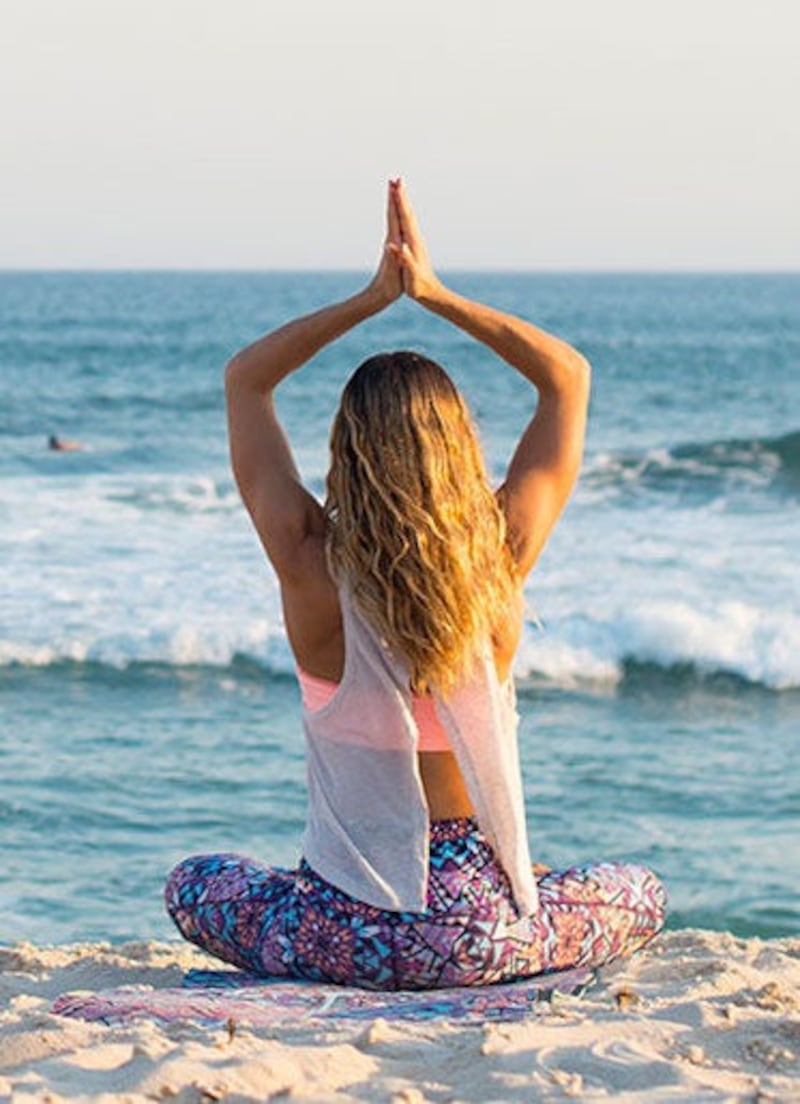
Yogawear from Sweaty Betty | Source: Sweaty Betty
The Story: Founded in Notting Hill in 1998 by husband and wife duo Tamara and Simon Hill-Norton, Sweaty Betty was originally a multi-brand boutique featuring labels sourced predominantly from Scandinavia and Italy. In 2007, the company pivoted its business model to produce its own label, competing more directly with Lululemon. It now operates more than 40 stores in the United Kingdom, with annual sales upward of $46 million. "We realised that reselling other people's sportswear brands in a premium location wasn't going to work. The margin on sportswear is so low, because everyone was doing the high-turnover stores on the high street," Tamara Hill Norton told BoF in 2014. "We needed to change direction and do our own label. Also, we were beginning to gain awareness and really wanted to push our brand."
The Plan: Sweaty Betty has now turned its attention to the US market, where it currently operates six standalone stores, e-commerce, and two concessions within Bloomingdale's. In January 2016, the company hired its first US president and chief executive, Erika Serow, from management consultancy Bain & Co. The company's business in the U.S. has doubled over the past year.
BANDIER
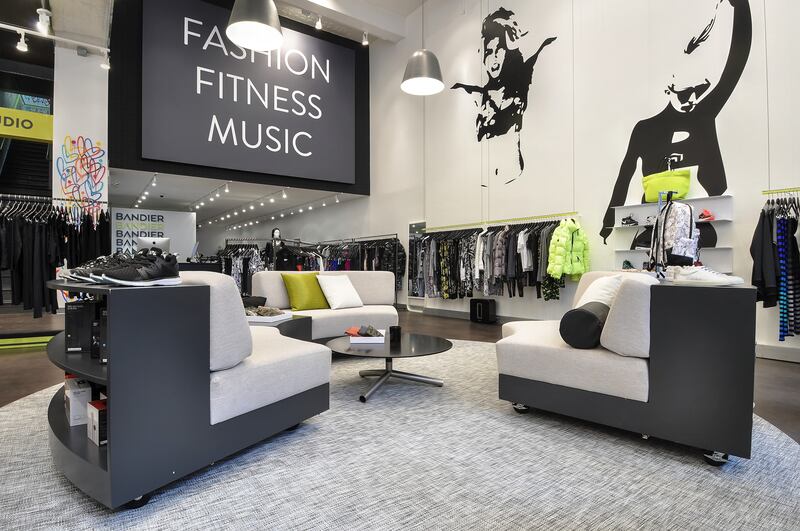
Inside Bandier's 5th avenue store | Source: Bandier
The Story: Former music executive Jennifer Bandier partnered with her husband, Neil Boyarsky, and Barney's Co-op founder Jayne Harkness to introduce a multi-brand retailer that carries everything from Mary Katrantzou's Adidas collection to Monrow and Spiritual Gangster. The company's Flatiron store, which opened in 2014, features a 3,000-square-foot fitness studio that offers more than 25 classes each week taught by superstar instructors. Like many high-end boutiques, Bandier has negotiated exclusives with the brands it sells, offering styles or colours unique to the retailer. What it hasn't done is focus its entire efforts on e-commerce, which currently makes up just a quarter of the company's sales. "We went the other way," Boyarsky told BoF, referring to the e-commerce-first trend in apparel businesses. The retailer averages 2.4 units per transaction and $1,400 per square foot. (The average cost of an item is about $80.) Sales are up 40 percent year over year.
The Plan: Along with a west-coast flagship store set to open in Los Angeles in 2016, the company is in the midst of closing its first round of outside funding. (Bandier and Boyarsky self-financed the project up until now.) "We have a unique business that's relative to the marketplace," Boyarsky said. While a private label is on Bandier's radar, "It's not imminent," Boyarsky added. "We think we've [already] created a compelling assortment, one that's not available anywhere else.
IVY PARK
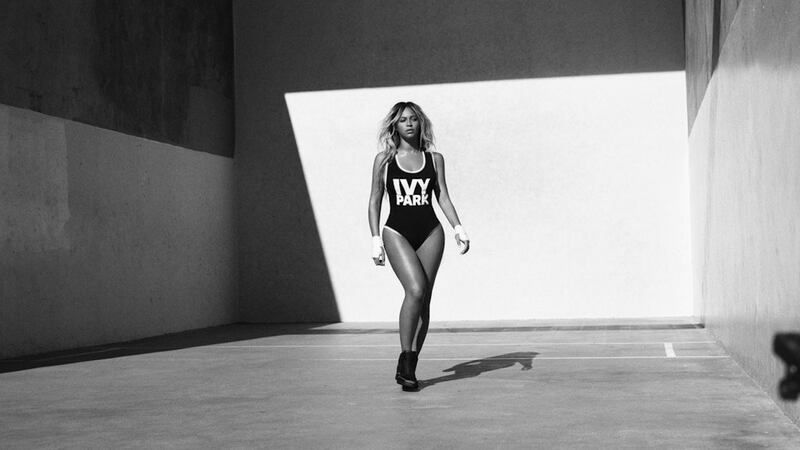
Ivy Park | Source: Ivy Park
The Story: Beyoncé and Topshop's Sir Philip Green are equal business partners in this new activewear brand, which will be available in mid-April at 12 retailers across the globe, including Topshop, Nordstrom, and Selfridges. The 200-piece collection, priced between $30 and $200, will not be sold through its own website. "Sir Philip has created some amazing collaborations but I wanted a partnership and a standalone brand," the entertainer-turned-mogul said in a statement.
The Plan: Both parties have remained relatively mum on the project, although Green has been slightly more vocal. "[Beyoncé's] engagement, our many meetings and her continued involvement in the range development has enabled us to deliver some wonderful products," he said in a release. Fortunately, the retail executive has his designer's world tour — and 66.8 million-plus Instagram followers — to help get the word out.
TRACKSMITH
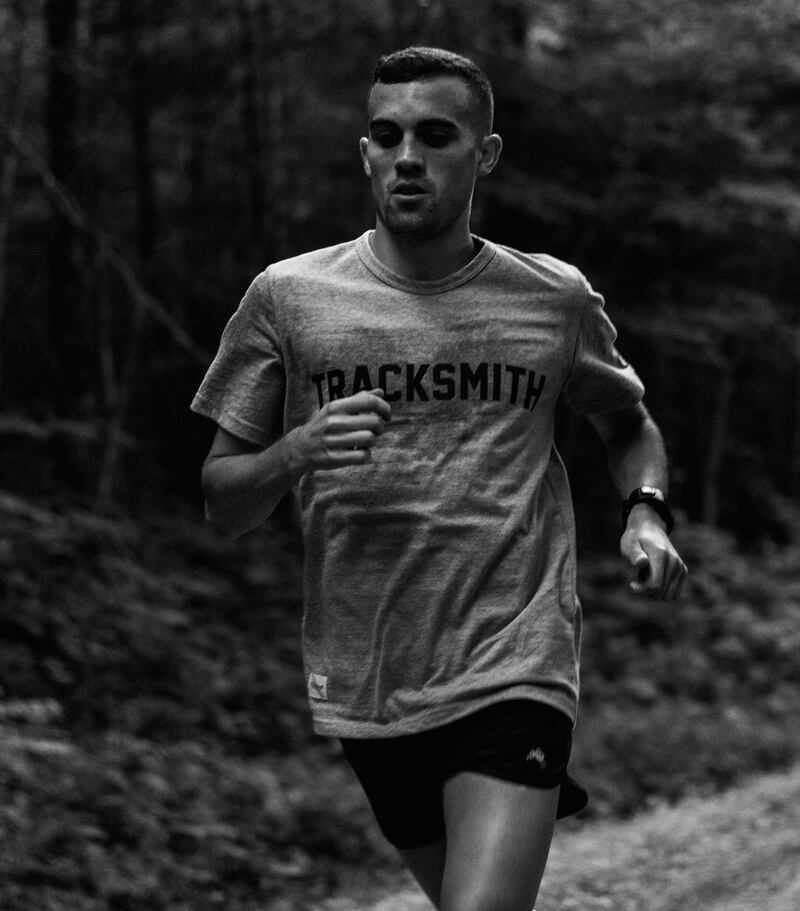
Tracksmith Spring/Sumer 2016 | Source: Tracksmith
The Story: Founded in 2014 by chief executive Matt Taylor and Luke Scheybeler, the latter of whom also co-founded cycling brand Rapha, the Boston-based Tracksmith is a running-first brand. "The great thing about running specifically is that almost everyone owns a pair of running shoes and shorts, and people will do lots of different activities in those clothes," Taylor told BoF. "Right now, we are perceived as an apparel brand. But the vision for Tracksmith is a lot grander and much more wrapped around a complete lifestyle. It's for anyone who is passionate about running."
Tracksmith has raised $5.7 million in funding with partners including the Pentland Group, a collection of apparel brands with a foothold in the outdoor/performance arena. The brand originally launched with men’s apparel only, introducing women’s nine months later. Currently, the male-female customer ratio is 70 percent to 30 percent, although Taylor predicts that to level off at an even split as more women learn about the product, which aesthetically nods to the collegiate track-star gear of the 1970s and 1980s. While the company will not disclose revenue numbers — and says that previous reports have been inaccurate — Taylor will confirm that sales have doubled year-over-year.
The Plan: Choosing a strategic investor like Pentland that understands the market will allow Tracksmith to grow at a more organic pace, according to Taylor. "When it was time to raise our Series A, the list of people we wanted to work with was [only] three deep," he said. "A lot of fund portfolios are not built around this industry." Taylor has established a three-phase plan in order to scale Tracksmith. The first phase of the process was refining the product. By the fall of 2016, the company will enter its second phase by increasing the availability of the product, both through its own e-commerce store — right now, Tracksmith spends "next to nothing" on paid marketing — but also through select wholesale partnerships and experimenting with pop-up shops. (Including the one that opened on April 6 on Boylston Street in Boston to coincide with the Boston Marathon.) The company also publishes a quarterly magazine called Meter. As for the third phase? "Footwear is not imminent but it is something we think about a lot," Taylor said.
AETHER
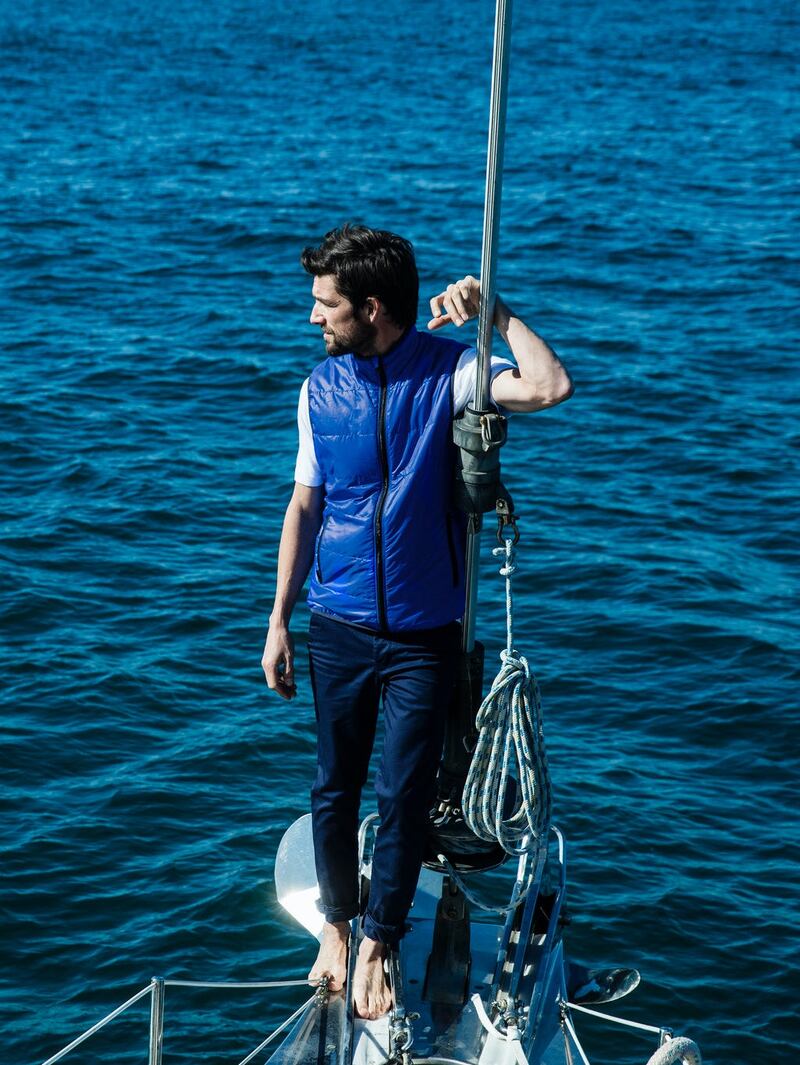
Aether Spring/Summer 2016 | Source: Aether
The Story: "When we started Aether in 2009, there were barely a handful of brands doing technically sound outerwear for the urban dweller," company co-founder Jonah Smith told BoF. "We looked around and if it was technical, it looked like you should be out in the field or on a mountain, and if it was good looking, it probably wasn't particularly warm or weatherproof." Smith and co-founder Palmer West set out to do just that, creating a range of gear that is meant to perform in all types of weather and conditions, from water-repellent wind breakers to stretch-ponte leggings. Self-financed, the company operates four standalone stores — Los Angeles, New York, San Francisco and Aspen, Colorado — alongside e-commerce and has experienced annual growth of an average 40 percent year-over-year for the past four years. "About two years ago, we shut down our entire wholesale business, which was about 150 stores in seven countries, and instead chose to focus on our own stores and a primarily direct-to-consumer model," Smith said. "We are just now starting to reap the rewards of that significant change."
The Plan: While the majority of Aether's business is menswear, the company is looking to expand its female audience. "We are still predominantly a men's business, but we have been focused on expanding and evolving our women's business for a couple of years now and are starting to see positive returns on our time and investment," West said. "We brought on a new design director and brand director in the last year or so. They've put a lot of focus on not only changing how we design for women, but also how we convey our message and shoot our women's product." The big focus, however, is expanding the retail footprint. "One thing to note is that we have made no advertising effort in Europe and yet it represents 25 percent of our sales, so we want to focus on that customer base moving forward," he added. The brand, which is known best for its jackets, also plans to offer more styles in subcategories like tops and bottoms.
Editor's Note: This article was revised on April 11th 2016. A previous version of this article misstated that Deborah Benton is the current president and chief operating officer of Nasty Gal. Benton was formerly president and chief operating officer of Nasty Gal.
From analysis of the global fashion and beauty industries to career and personal advice, BoF’s founder and CEO, Imran Amed, will be answering your questions on Sunday, February 18, 2024 during London Fashion Week.
The State of Fashion 2024 breaks down the 10 themes that will define the industry in the year ahead.
Imran Amed reviews the most important fashion stories of the year and shares his predictions on what this means for the industry in 2024.
After three days of inspiring talks, guests closed out BoF’s gathering for big thinkers with a black tie gala followed by an intimate performance from Rita Ora — guest starring Billy Porter.